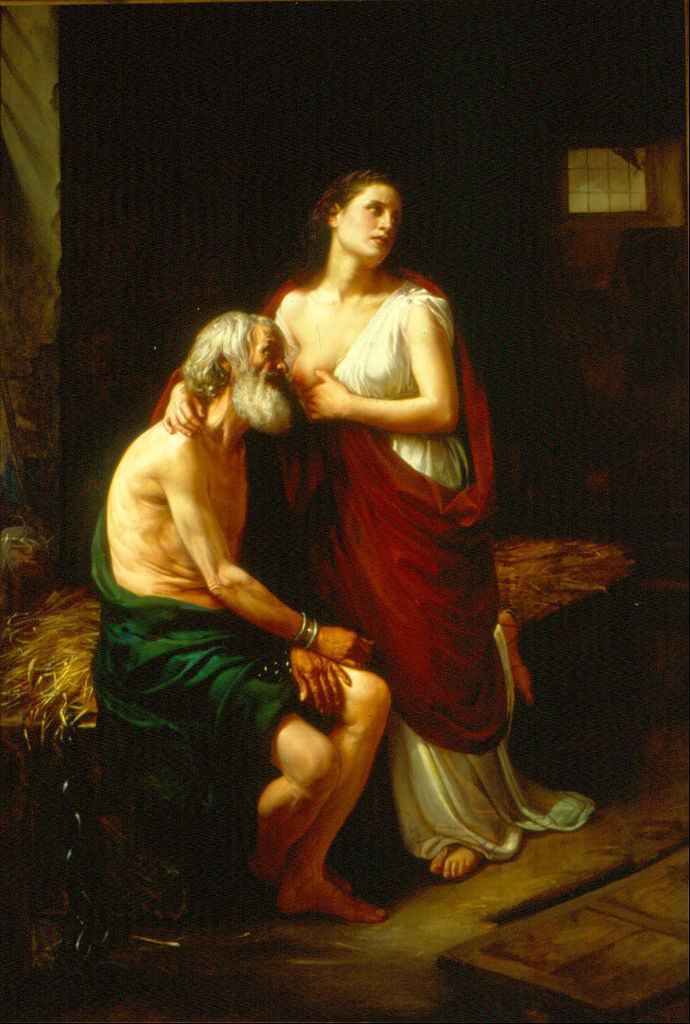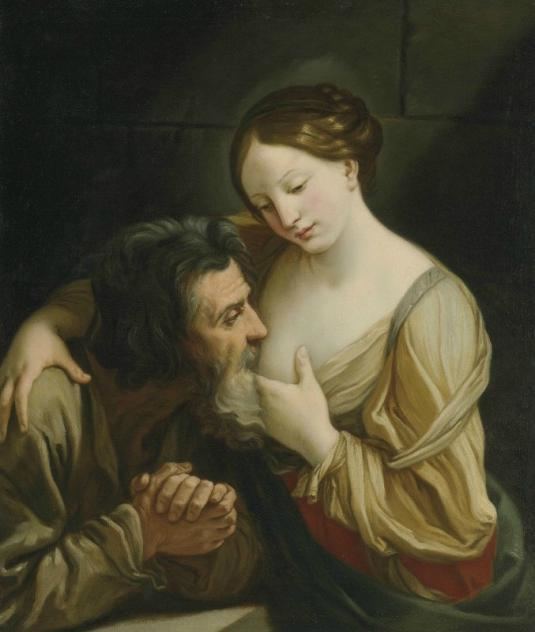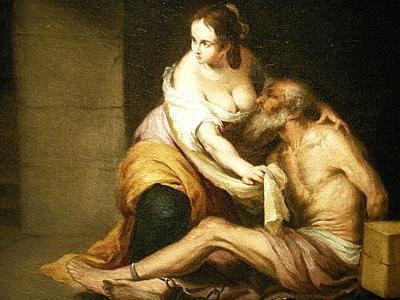 | ||
Similar Cimon and Pero (Roman, The Seven Works of Mercy, Samson and Delilah, The Judgement of Paris, Susanna and the Elders | ||
Roman Charity (Latin Caritas romana; Italian Carità Romana) is the exemplary story of a woman, Pero, who secretly breastfeeds her father, Cimon, after he is incarcerated and sentenced to death by starvation. She is found out by a jailer, but her act of selflessness impresses officials and wins her father's release.
History
The story is recorded in Factorum ac dictorum memorabilium (Nine Books of Memorable Acts and Sayings of the Ancient Romans) by the ancient Roman historian Valerius Maximus, and was presented as a great act of pietas (i.e., filial piety) and Roman honour. A painting in the Temple of Pietas depicted the scene. Among Romans, the theme had mythological echoes in Juno's breastfeeding of the adult Hercules, an Etruscan myth.

The story of Cimon is predated, however, by an almost identical story recorded by Roman historian Valerius Maximus, later retold by Pliny the Elder (23-79), of a jailed plebeian woman who was nursed by her daughter. Historians note that Renaissance and Baroque depictions have more incestuous overtones.
In the seventeenth and eighteenth centuries, many European artists depicted the scene. Most outstandingly, Peter Paul Rubens painted several versions. Baroque artist Caravaggio also featured the deed (among others) in his work from 1606, The Seven Works of Mercy. Neoclassical depictions tended to be more subdued.

In the 20th century a fictional account of Roman Charity was presented in John Steinbeck's The Grapes of Wrath (1939). At the end of the novel, Rosasharn (Rose of Sharon) nurses a sick and starving man in the corner of a barn. The 1969 painting Partisan Ballad by Mai Dantsig also echoes Roman Charity.

The 1973 surrealist film O Lucky Man! also contains a scene of Roman Charity when the protagonist is starving and a vicar's wife nurses him rather than let him plunder the food gathered for an offering.
